Whenever we connect a USB Flash Drive on any external hard drive to our Windows computer, it is mounted, and we are able to access it and carry out file operations on it. When we complete our work, to disconnect it, rather than directly pulling it out physically, it is recommended that we use the Safely Remove Hardware or Eject Drive option. This ensures that any incomplete file operations are completed, and data corruption is avoided. Only after it is safe to disconnect the USB, should we physically remove the USB.
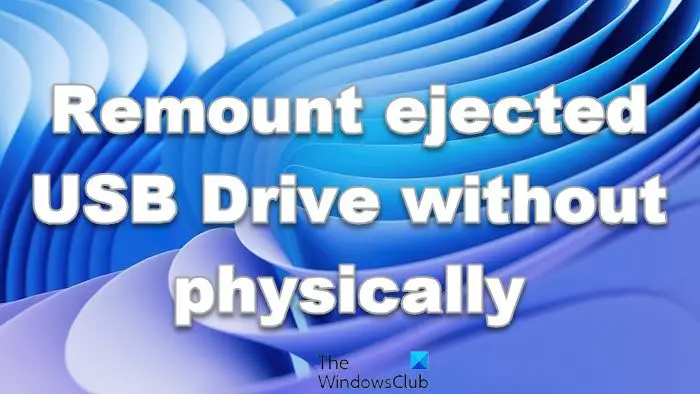
But what if we feel the need to use the media again? We will have to connect it physically. And what if we have used the Eject Media option to dismount the media, but not physically unplugged it, and you now want to use the media again?
You would normally physically remove the USB and after waiting for a few seconds, plug it back again. This is all fine if you are on a laptop, but it can get tedious if you are on a Desktop and your CPU is kept at an odd place or maybe under your table. In such cases physically unplugging it and plugging it back can become a tedious task.
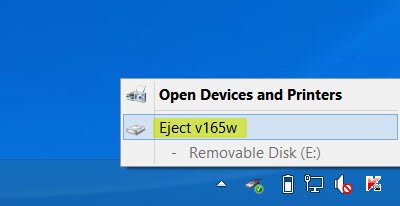
Unfortunately, Windows does not offer the function to let you easily remount the ejected USB Drive or media. But if you ever feel the need to remount the ejected USB Drive, without physically reconnecting it, follow this procedure.
Remount ejected USB Drive in Windows 11/10
In Windows 11/10, right-click on the Start Button to bring up the WinX Menu. Select Device Manager. Scroll down to the entry USB Mass Storage Device, with the yellow exclamation mark. Right-click on it and select Properties.
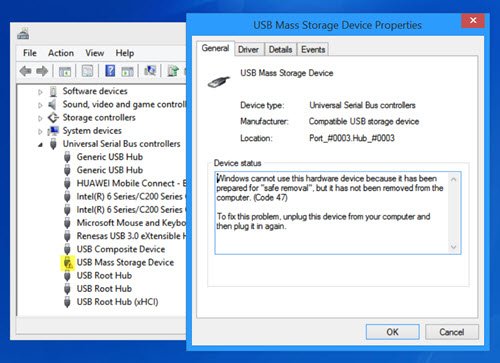
You will see the Device status under the General tab, mentioned as:
Windows cannot use this hardware device because it has been prepared for “safe removal”, but it has not been removed from the computer. (Code 47) To fix this problem, unplug this device from your computer and then plug it in again.
Well, right-click on this USB Mass Storage Device and select Disable.
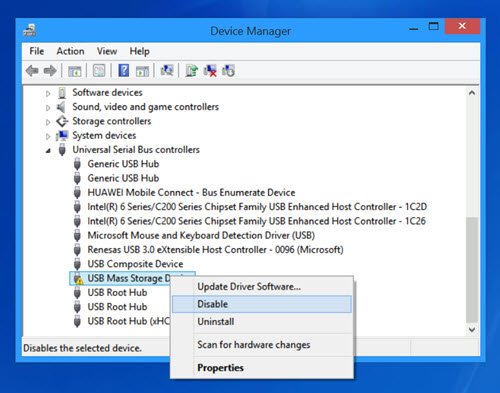
You will see this confirmation box. Click on Yes.
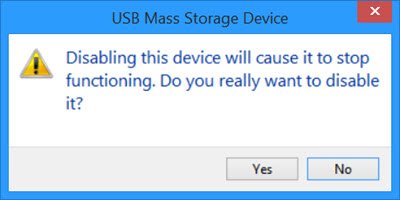
Now again right-click on the USB Mass Storage Device entry. This time you will be offered the Enable option. Click on it.
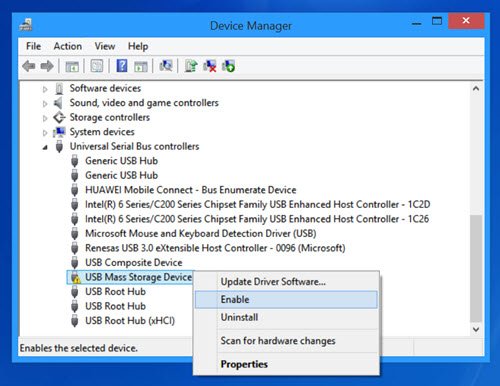
You will see the following dialog box. Do not restart your computer. Select the No option.

That is all you need to do! Disable and then Enable the device! Check your My PC folder, and you will see this USB remounted and offered.
This worked for me, and I am sure that it should work for you too.
This option is much better than physically unplugging and then reconnecting the device again, but I would have been happy, if Microsoft had offered an easy option to remount the ejected USB drive or media, along with the Eject Media option.
Read next: Automatically create shortcuts to USB Removable Media on Windows desktop.
my question is.. why would you ever -need- to dismount it, if you plan on just leaving it plugged in? It’s not doing any harm, and it’s not any form of annoyance. It changes absolutely nothing except the visible drives in “My Computer”
There is zero advantage to having it dismounted while not in use.
I guess this is a good trick to know, in case you accidentally dismount the wrong drive or something, but otherwise, useless.
It’s a good trick to know.
I’ve disabled the wrong device & had to go routing for the correct connector. Can be a pain when there’s 15 & one resides inside the pc so it’s a case of restarting, not a simple unplug/replug.
I’m going to go & see if there’s some script out there to perform this task.
Devcon can do it but I’ve not had much luck with this.
@Flux I use flash drives for backup. Because of the prevalence of Cryptolocker etc. I only want my backup drives available when I’m backing up and out of the picture the rest of the time, so that ransomware can’t encrypt them. So with the instructions in this article I can dismount or mount them without having to unplug them from the desktop.
Most desktops have usb ports in front and and laptops have those on their sides or rear. It takes only less than three seconds to unplug then replug your flash into the usb port. Why bother doing this?
True – It has been mentioned in the post: “This is all fine if you are on a laptop, but it can get tedious if you
are on a Desktop and your CPU is kept at an odd place or maybe under
your table. In such cases physically unplugging it and plugging it back
can become a tedious task.”.
Forget these guys. This article is an absolute godsend for people like me who work remotely – just needed to reconnect a backup drive on a server without needing to restart it in the middle of a workday. Thanks for sharing!
i am also facing same problem i Disable the antivirus it’s working fine
this don’t work on my windows 7
you are genius, I did eject a usb drive by mistake on a remote server which is far locationwise to reach.
Well you answered the question yourself, it’s just good to know.
If you ever do some late night remote operation on a Windows machine and click the wrong button… :D
Because of the price of plane tickets, many of us are not willing to unplug and replug a USB device to remount it on a machine that we are connected to via RDC from thousands of miles away.